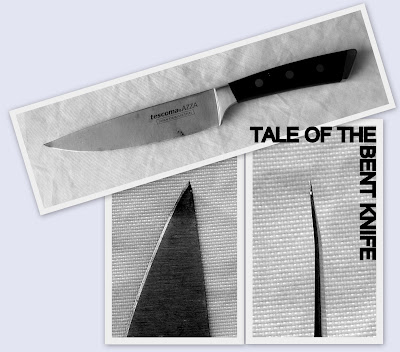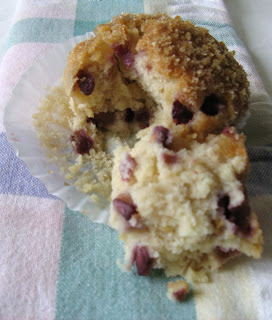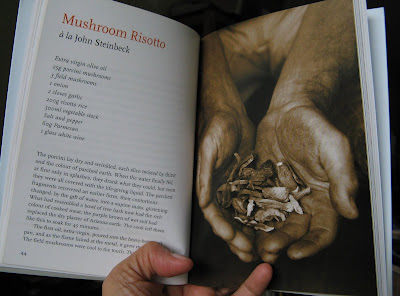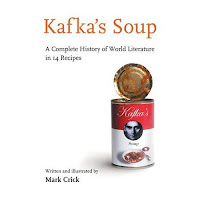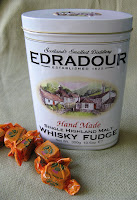 |
| It's not burnt! Those are the delicious parts! |
Each story starts with a list of ingredients, but the instructions must be garnered from the narrative that follows. Very clever. And the recipes seem highly workable.
I tried the cheese on toast because I like cheese, grilled or otherwise, and sandwiches. Now, I have to admit I didn't have any pesto, which was called for in the recipe, nor any of the ingredients to make it. But I did have some leftover olive paste and used that instead. I didn't have any fresh oregano either so I left it out – I don't think dried would have worked as well.
Also, while "Harold Pinter" presents his recipe in a short one-act play, preparing the actual sandwich takes awhile since there are a few things to prepare and to be grilled.
This literary sandwich is prepared by a young man who lives in a rather shabby dwelling and shared with an older man with a tramp-like appearance – one may presume they aren't well off, even if the young man wears a leather jacket. Yet this is a meal whose ingredients they can afford. Over here in Malaysia, most of the items are imported and considered "premium" ingredients and they wouldn't be everyday cooking items.
But so what if this sandwich cost me the price of three normal rice-meat-and-two-veg meals. It was delicious!
CHEESE ON TOAST À LA HAROLD PINTER
Makes 2 large open-faced sandwiches
1 loaf of ciabatta, cut in half lengthwise
1 aubergine, finely sliced
Extra virgin olive oil
Pesto
200g mozzarella, sliced
2 teaspoons fresh oregano, chopped
- Put ciabatta under the grill to warm.
- Heat some oil in a skillet; put in the aubergine slices. Remove slices when they are golden.
- Spread a thin layer of pesto on the cut side of the warmed ciabatta. Lay the aubergine slices on top of the pesto. Lay the mozzarella slices on top, drizzle with olive oil and sprinkle with oregano. Place ciabatta back under the grill until the mozzarella has turned brown and golden in places. Cut each half into pieces and serve.

